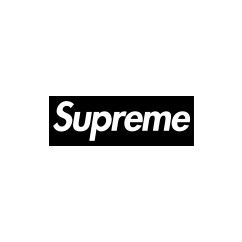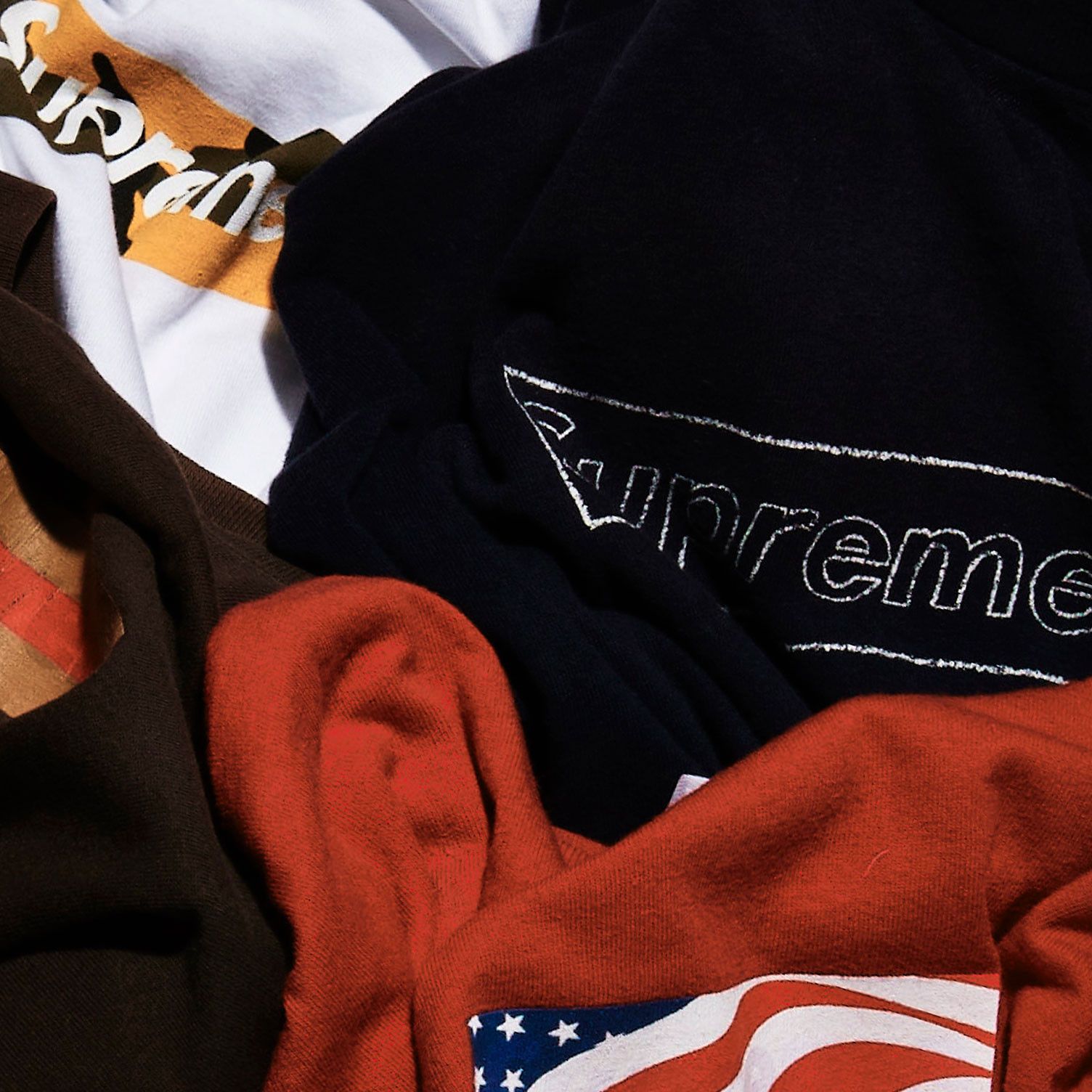
Supreme
After gaining over a decade of experience in the fashion retail industry at Parachute, Union and Stussy, James Jebbia founded Supreme in 1994. Well before group chats, message boards and social media, the Supreme store, on Lafayette and Spring in New York’s SoHo neighborhood, quickly became the place to hang out for New York’s downtown skate community.
The first thing Supreme sold was cool itself. Though there were no lines outside just yet, the energy surrounding the store was palpable. The skaters, the notoriously blasé employees, combined with a location that wasn’t nearly as policed as it is today, made Supreme a hub for the kind of youth that made up a fringe culture then, and the mainstream culture now.
Over the years, Supreme’s audience has grown to include all walks of life. From the downtown New York skaters it was originally intended for and inspired by to streetwear enthusiasts looking for cool graphic tees to match their sneakers to those simply looking for the perfect hoodie, Supreme serves its purpose.
What separates Supreme from other brands of its ilk is its ability to satisfy the needs of so many consumers with products that fit their style. When scrolling through one of its highly anticipated season previews, it’s easy to see how someone could put together a wardrobe of prep, punk or skater style clothing. For many, it’s all about the brand's infamous box logo tees, hoodies and wide range of accessories, along with collaborations with high profile brands such as Nike and Comme Des Garçons. Some customers who like the brand but are looking for a more mature look keep their eyes peeled for the brand’s knitwear and suiting, while others who are interested in the ways Supreme uses high quality materials may keep tabs on the items that utilize Gore-Tex, Cordura and leather. The beauty of Supreme lies in its diverse array of items, all made with care and quality. While most skate brands aren’t necessarily known for their quality, Jebbia is notorious for his keen eye for details and desire to make Supreme a brand known for high quality and long lasting products.
Supreme’s legacy consists of not only its clothing but in the changes it brought to the fashion industry. The idea of a “drop day” was started by Supreme out of necessity. In the early days, when the brand was producing smaller collections in smaller quantities, the store would often be empty for months at a time. He told GQ, “We’d actually have some seasons where we were sold out of the summer product at the end of March. We’d have nothing to sell in April, May, June, July.” To counter this problem, Supreme created a new rollout strategy now known as the “drop day”, where they release a small portion of the collection every Thursday for a few months at a time. The “drop day” method has since been adopted by brands like Celine, Burberry and Noah, among many others.
Another one of Supreme’s major contributions to the fashion world is its frequent collaborations. Though now commonplace, Supreme is the brand that changed the idea of what a collaboration could be and do. Supreme’s collaborators can be broken up into four groups: the seasonal stalwarts (including Timberland and The North Face), the artists (including Rammellzee and Sekintani La Norihiro), the musicians (featuring Dead Prez and The Velvet Underground) or, on occasion, high fashion brands (Jean Paul Gaultier and Louis Vuitton).
The collaborations are always released in conjunction with a drop of Supreme’s mainline products, introducing those who may have only come to the store (or website) looking for a specific collaboration to the Supreme’s other products. The collaborations are beneficial to both sides; Supreme will often add its flare to a brands lesser known products, creating a new market for the collaborator while also bringing ideas Supreme wouldn’t feasibly execute on its own to its audience.
Everyone has an opinion on Supreme. Explore the brand's rich history, look closely at the products and learn about its global impact on streetwear today. When you’re done, we’ll be here to help you find the pieces you can’t live without.
Is Supreme owned by Louis Vuitton?
No, Supreme is not owned by Louis Vuitton. In 2017, Supreme received a $500 million investment from the multinational private equity firm The Carlyle Group for a 50 percent stake (which put Supreme’s valuation at $1 billion). The owners of the other 50 percent are undisclosed.
Why is Supreme so expensive?
Depending on the item, Supreme’s pricing can be explained for various reasons. For one, Supreme makes high quality products in limited runs and, when ordering items from factories, the fewer you order, the higher the cost per item. Supreme’s products are on par with brands that place much larger orders, and thus their prices are relatively high compared to the other brands.
What store sells Supreme?
Supreme is sold at its own stores in the U.S., Europe, and Japan and webstore. The brand is also stocked at Dover Street Market New York.

